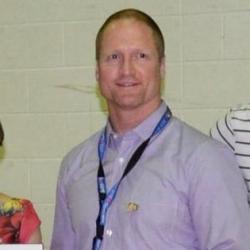Ties that bind in a variety of ways.
The triumphant moment of joy came for Freddie Freeman following his game-winning Grand Slam, which began the momentum for the Dodgers World Series win over the Yankees. After crossing the plate, Freeman ran immediately to the backstop and jumped onto the netting, greeting his father and clenching his hands in an emotional display of victory and achievement.
Freeman has often acknowledged his dad’s impact on his rise to MLB stardom. He lost his mother, Rosemary, to cancer when he was 10 years old, and at the age of 12, he almost lost his father, Frederick, to congestive heart failure. Had he not acted quickly and called for help during that episode, Freddie Freeman would have quite possibly and tragically been left without a parent. Freddie’s immediate reaction following that home run highlighted the importance of positive parental involvement in the development of athletes.
Behind every great athlete is a story of a committed adult who invested all their resources in coaching and developing their child. Freddie Freeman’s story is remarkable because he does not come from a family of professional athletes.
Aaron Judge is another player who rose to stardom through determination and innate talent. Judge was adopted and raised by working-class parents in Sacramento, California. In an era where perceived nepotism permeates professional sports, there are still stories of great athletes who emerge from humble, working-class upbringings and have had to overcome traumatic obstacles.
That said, when looking at the background and upbringings of all professional athletes across the four major sports, there seems to be a sharp rise in the number of players whose fathers had previously played professionally, some of All-Star or even Hall of Fame status. There have been roughly 250 second-generation Major League players to have cracked a team’s roster. At least 20 are currently playing regularly as of the 2024 season. Similarly, the NBA has roughly 25 such players whose dads were active NBA players when they were kids.
Some of the more notable examples in baseball are Ken Griffey Jr. and Sr., the only Father-Son combination to have homered in the same game. More recently, Bobby Witt Sr., who pitched 16 MLB seasons, ended his career with the Arizona Diamondbacks in 2001 as a World Series champion. Meanwhile, Bobby Witt Jr. is the only shortstop in MLB history to have two 30-30 seasons (30 home runs + 30 stolen bases).
Famous lineage in the NBA goes much deeper and beyond the media frenzy surrounding the arrival of Bronny playing with his dad, LeBron James. Steph Curry and Klay Thompson are legendary for having built their brand as the “Splash Brothers” while leading the Golden State Warriors to four NBA Championships. They quickly attribute their skillset and success to their dads, Dell Curry and Mychal Thompson, exceptionally skilled sharpshooters in the NBA. Beyond DNA, the time spent coaching and assimilating their sons into the environment of an All-Star professional athlete likely made the difference in creating the foundation for greatness on a level that had never been seen before.
There have been many stories of players rising from harsh conditions to eventual stardom in the NBA, and all have attributed their success directly to the teaching, mentoring, coaching, and counseling of a skilled and caring adult. The point is that second-generation players seem to have an advantage regarding resources and a more direct pathway to stardom.

The great Gordie Howe (photo courtesy The New Yorker)
The NHL used to be a league where a kid could commit to building skills on the frozen pond and, through sheer time and dedication, could rise through the ranks and reach the pinnacle of success. Hockey legends such as Gordie Howe and Maurice “Rocket” Richard rose from poverty and a desolate lack of resources to separate themselves from the pack of players in their regions of rural Saskatchewan and Quebec, respectively. There weren’t the levels of travel teams in those early days, and through repetition and endless hours on outdoor frozen rinks, they could hone their craft to the point where they stood out as elite skaters on their local teams.
Bobby Orr explains that this is how his skills were developed early on, ultimately growing so that he would eventually be declared the greatest defenceman of all time. Nowadays, connections (particularly family lineage) seem to be a powerful indicator of who is who in the NHL. Hoisting the Stanley Cup with the Florida Panthers last season was Matthew Tkachuk, who, along with his brother Brayden of the Ottawa Senators, have the makings of a modern royal family, with their father Keith as the matriarch hockey dad having played 20 solid years in the NHL.
That is just one example of the 6% of current NHL players whose fathers had also played. That stat represents an increase from just over 1% in 1981. Older hockey fans can look at the list of top scorers each year and recognize names like Tkachuk, Nylander, Gagner, or Reinhart. The apple doesn’t fall far from the tree.
Success in sports, as in all areas of life, begins with a sense of love and support at home. Athletes will have to endure and overcome many obstacles and adversity on their way to the top. Perhaps those who are privy to locker room culture and the ways of a pro athlete early on have an advantage in their pursuit of greatness.
It is certain, though, and was shown following Freddie’s magnificent home run, that having that adult actively present to help comfort the falls and equally celebrate the triumphs is the vital piece that no athlete can succeed without.
************
Sources: Stats obtained from MLB.com, Wikipedia
Hockey references are from the book Orr: My Story by Bobby Orr (2013).














